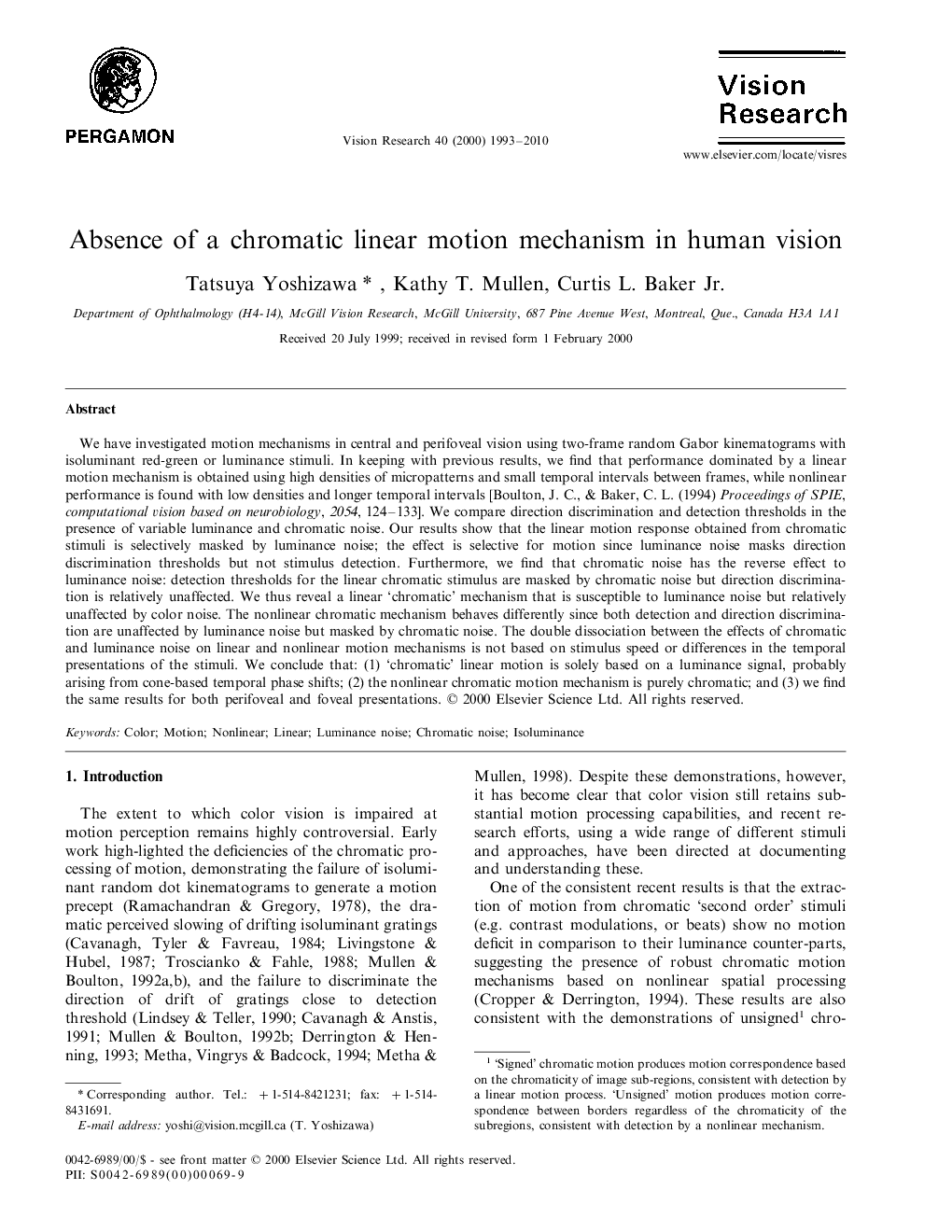| Article ID | Journal | Published Year | Pages | File Type |
|---|---|---|---|---|
| 4037433 | Vision Research | 2010 | 18 Pages |
We have investigated motion mechanisms in central and perifoveal vision using two-frame random Gabor kinematograms with isoluminant red-green or luminance stimuli. In keeping with previous results, we find that performance dominated by a linear motion mechanism is obtained using high densities of micropatterns and small temporal intervals between frames, while nonlinear performance is found with low densities and longer temporal intervals [Boulton, J. C., & Baker, C. L. (1994) Proceedings of SPIE, computational vision based on neurobiology, 2054, 124–133]. We compare direction discrimination and detection thresholds in the presence of variable luminance and chromatic noise. Our results show that the linear motion response obtained from chromatic stimuli is selectively masked by luminance noise; the effect is selective for motion since luminance noise masks direction discrimination thresholds but not stimulus detection. Furthermore, we find that chromatic noise has the reverse effect to luminance noise: detection thresholds for the linear chromatic stimulus are masked by chromatic noise but direction discrimination is relatively unaffected. We thus reveal a linear ‘chromatic’ mechanism that is susceptible to luminance noise but relatively unaffected by color noise. The nonlinear chromatic mechanism behaves differently since both detection and direction discrimination are unaffected by luminance noise but masked by chromatic noise. The double dissociation between the effects of chromatic and luminance noise on linear and nonlinear motion mechanisms is not based on stimulus speed or differences in the temporal presentations of the stimuli. We conclude that: (1) ‘chromatic’ linear motion is solely based on a luminance signal, probably arising from cone-based temporal phase shifts; (2) the nonlinear chromatic motion mechanism is purely chromatic; and (3) we find the same results for both perifoveal and foveal presentations.
